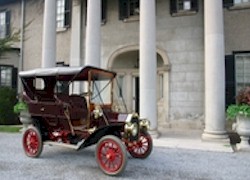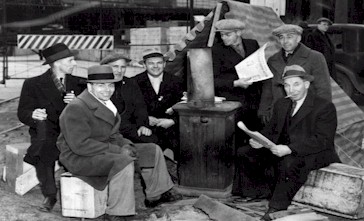| History Geography |
|
History Geography Oshawa Oshawa began as a transfer point for the fur trade. Beaver and other animal pelts were trapped by local natives and traded with the voyagers. The Mississauga Indians at the Oshawa harbour loaded furs onto canoes transporting them to the trading posts located to the west at the mouth of the Credit River. The French constructed a trading post around the 1760's near the harbour location, this was abandoned after a few years, but its ruins provided shelter for the first residents of what later became Oshawa. Most notably, one of the fur traders was Moody Farewell, an early resident of the community who was to some extent responsible for its name change.
Roger Conant, started an export business shipping salmon to the United States in the late 1700s. Conant's success attracted further migration into the region. A large number of the founding immigrants were United Empire Loyalists, who left the United States to live under British rule. Irish and French Canadian immigration increased as did industrialization. Oshawa and the surrounding Ontario County were also the settling grounds of a disproportionate number of 19th century Cornish immigrants during the Cornish emigration which emptied large tracts of that part of England. The surveys also ordered by Governor John Graves Simcoe, and subsequent land grants, helped populate the area. When Col. Asa Danforth laid out his York-to-Kingston road, it passed through what would later become the city of Oshawa. Newly established Oshawa became an industrial centre, putting into operation industries such as tanneries, asheries and wagon factories. Unfortunately due to the economy many of these industries closed shortly after opening. In 1876, Colonel Robert Samuel McLaughlin moved his carriage works to Oshawa from Enniskillen to take advantage of its harbour as well as the availability of a rail link. McLaughlin constructed a two-story building, which was soon added to. This building heavily remodelled in 1929 received a new facade and being extended to the south using land where the city's goal had once stood.
In 1908 the McLaughlin Carriage Company began to manufacture Buick automobiles under the McLaughlin-Buick name. This resulted from talks between Col. R. S. McLaughlin and "Billy" Durant the entrepreneur who had created General Motors in the U.S. around the same time. In 1915 the firm acquired the manufacturing rights to the Chevrolet brand. Within three years his firm and the Chevrolet Motor Car Company of Canada merged, creating General Motors of Canada. Col. R. S. McLaughlin became the head of this new operation, and his factory expanded rapidly, eventually covering several blocks. The popularity of the automobile in the nineteen-twenties generated rapid expansion of Oshawa, which grew in population from 4,000 to 16,000 during this decade as well as in land area. In 1924, Oshawa annexed the area to its south, including both the harbour and the community of Cedardale. This growth allowed Oshawa to seek incorporation as a city, which took place March 8, 1924.
On April 8, 1937, disputes between 4000 assembly line workers and General Motors management led to the Oshawa Strike, a salient event in the history of Canadian trade unionism. As the weight of the Great Depression slowly began to lift, demand for automobiles again began to grow. Workers sought higher wages, an eight hour workday, better working conditions and recognition of their union, the United Auto Workers Local 222. The Liberal government of Mitchell Hepburn had ironically, been elected on a platform of being the working man's friend, sided with the corporation and even brought in armed university students to break up any union agitation. Fortunately, these much-derided "Hepburn's Hussars" and "Sons of Mitches" were never needed as the union refused to be drawn into any violent act. The union and workers had the backing of the local population, other unions and the Cooperative Commonwealth Federation. On April 23 two weeks after the strike started, the company gave in to most of the workers' demands, although it would not recognize the union.
For most of the last thirty years, Oshawa has tried to promote the downtown core as a viable place to live and work. With continued failed attempts to attract new business and other projects to Oshawa. Local politicians and civic officials hoped the opening of the General Motors Centre would spark renewed interest in downtown revitalization. In addition, the University of Ontario Institute of Technology has relocated the Faculty of Education in downtown Oshawa, in a building originally built as a bank. The New Durham Region Courthouse was completed in 2009. Most of Oshawa's growth has occurred on the outer regions of the city. Legislation passed by the Ontario Government in 2005 now protects green space to the north of the city the Oak Ridges Moraine, which will eventually prohibit any further expansion of the urban boundary. This will likely result in the redevelopment of Oshawa's many 'Brownfield' sites, and may result in increased density. In fact, a large tract of land became available for development in early 2008 when the old GM "north plant" was finally demolished. Site created by ProRank IT Consultants |
|||||
| < Prev | Next > |
|---|



 Voyager Traders
Voyager Traders


